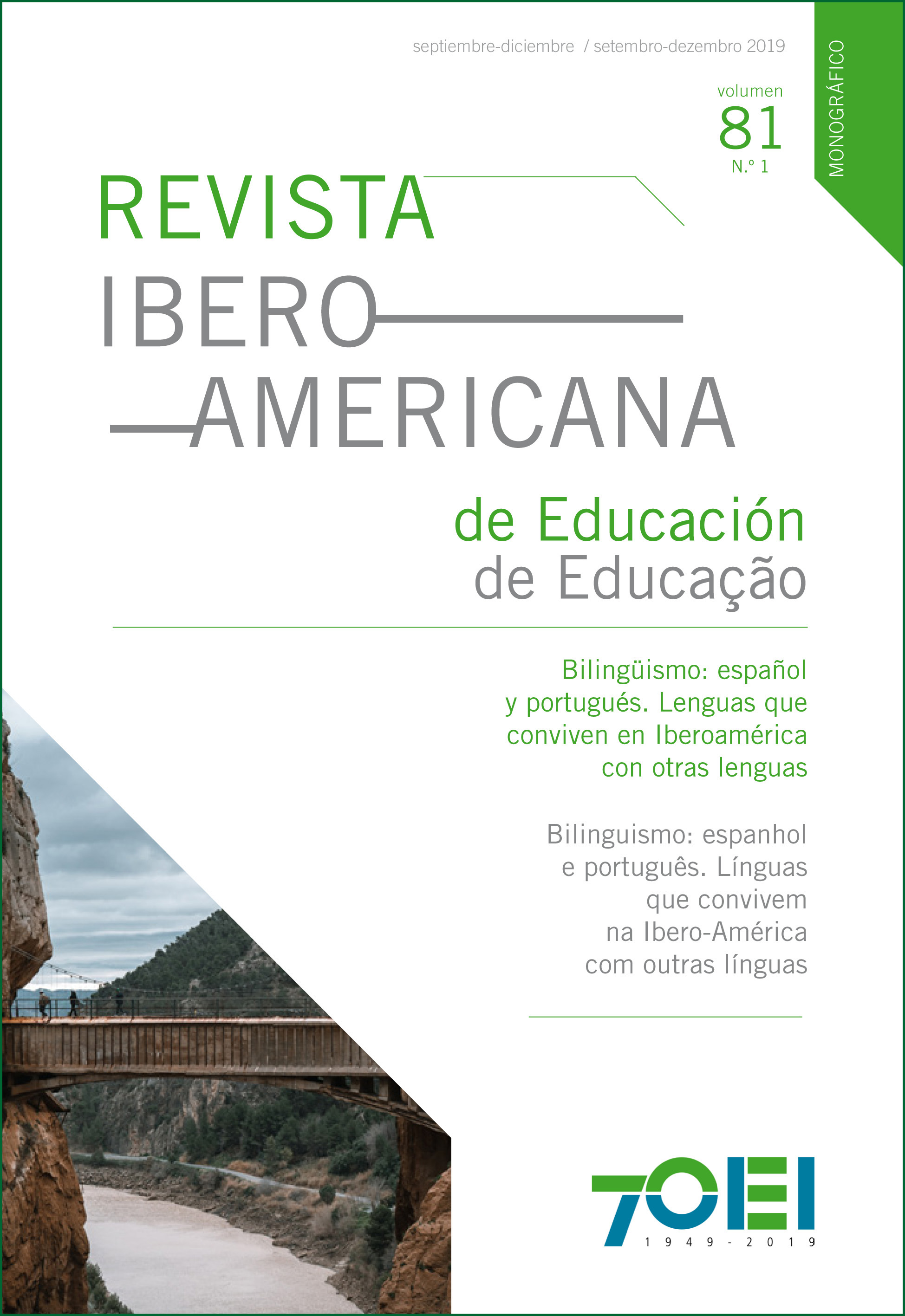Basis for a detailed study of the presence of Spanish and Portuguese and its real incidence in the world
DOI:
https://doi.org/10.35362/rie8113538Keywords:
language spread; quantitative research; Spanish; Portuguese; ibero-american spaceAbstract
In recent decades, various estimates have circulated about the global importance of languages, supported by criteria, methodologies and data sources that are also diverse and not always reliable or updated. Given the interest to know the current state and possible projections of Ibero-American languages, this article proposes, in its first part, a critical review of the main existing quantitative studies on languages in the world. Then, as a result of this review, it offers an outline of an instrument for a study of the presence of Spanish and Portuguese in the world, which can also provide elements for a better understanding of cultural, educational and other dynamics that take place within the Ibero-American space and that are expressed in the linguistic sphere. The last part of the article presents some examples of analysis that can be carried out in this perspective within the field of education based on the statistical data that it is proposed to collect.
Downloads
References
Albuquerque A., y Esperança, J. P. (2010). El valor económico del portugués: lengua de conocimiento con influencia global (sitio). Real Instituto Elcano. Recuperado de https://bit.ly/2ZaVLbr
Anderson, B. (1983). Imagined Communities. Reflections on the Origin and Spread of Nationalism, Verso, Londres-Nueva York.
Bloomberg LP. (2011). The languages of business (sitio). Bloomberg LP. Recuperado de https://bit.ly/33Icrqn
Calvet, L. J. (2010). Poids des langues et « prospective »: essai d’application au français, à l’espagnol et au portugais. Synergies Brésil, 1, 41-58
Chan K. L. (2016). Power language index. Blog. Recuperado de https://bit.ly/30gZgdT
García Delgado J. L., Alonso J. A., y Jiménez, J. C. (2012). El valor económico del español. Madrid: Telefónica.
Grin, F. (2015). La valeur des langues dans l’activité professionnelle (Sitio) Fondation pour les études et recherches sur le développement international.
Lodares, J. R. (2001). Gente de Cervantes: Historia humana del idioma español. Madrid: Taurus Ediciones.
Mora-Figueroa y Williams, S. / Marqués De Tamarón (1996). El peso de la lengua española en el mundo. Valladolid: Ediciones Universidad De Valladolid
Moreno, F. (2015). La importancia internacional de las lenguas. Informes del observatorio. Observatorio de la lengua española y las culturas hispánicas en los Estados Unidos. Recuperado de https://bit.ly/2s6R8Nf
Moseley, C (ed.) (2010). Atlas de las lenguas del mundo en peligro, 3ra edición. París, Ediciones UNESCO. Disponible en https://bit.ly/1RBHesp
Nández, J., y Varela, L. (eds.) (2015). Español y portugués, vectores de integración regional. Aportes para una política de formación docente. Buenos Aires: Teseo/PASEM.
Pimienta, D., Prado, D. y Blanco, A. (2010). Douze années de mesure de la diversité linguistique sur l’Internet: bilan et perspectives. París: UNESCO.
Reto, L., Azzim Gulamhussen, M., Machado, F., Costa, A.. (2012). Potencial Económico da Língua Portuguesa. Texto Editores, Lda.
Rojo, G., y Sánchez, M. (2010). El español en la red. Barcelona: Ariel y Fundación Telefónica.
Ronen S., Gonçalves B., Hu K. Z., Vespignani A., Pinker S., y Hidalgo, C. A. (2014). Links that speak: The global language network and its association with global fame. Proceedings of the National Academy of Sciences, 111(52), E5616-E5622. Disponible en https://bit.ly/2KJiUK9
Varela, L. (2014). Para un plan de implementación de la ley de portugués. E. Arnoux y S. Nothstein (eds.). Temas de Glotopolítica. (121-150). Buenos Aires: Biblos.
Weber, G. (1997). The Word’s 10 Most Influential Languages. Language today, 2
How to Cite
Downloads
Published
Issue
Section
License
Any authors who publish with this journal accept the following terms:















